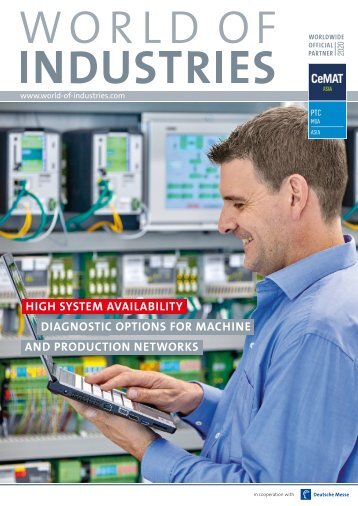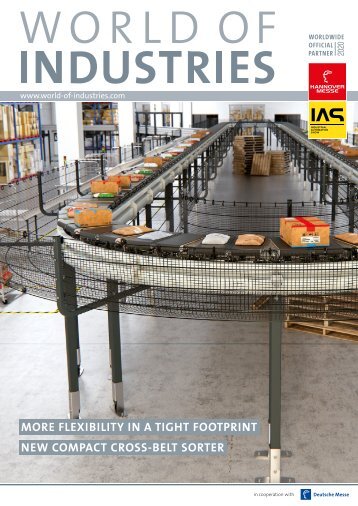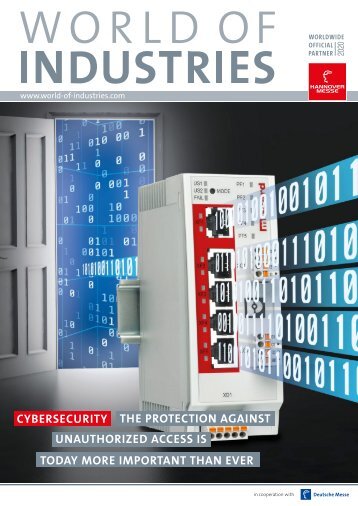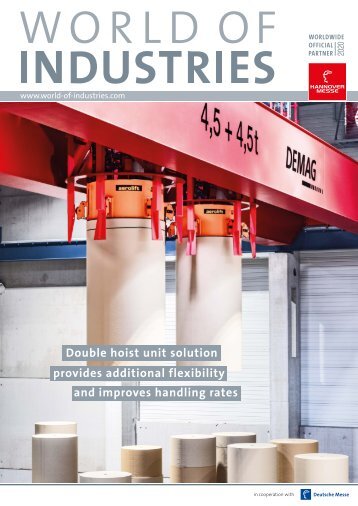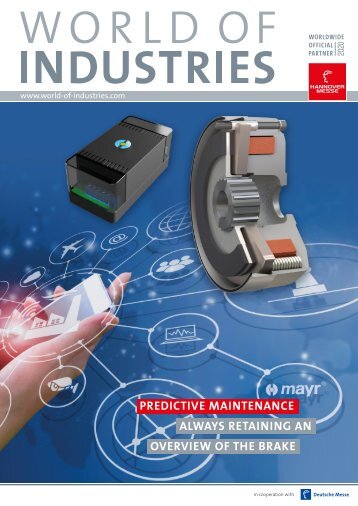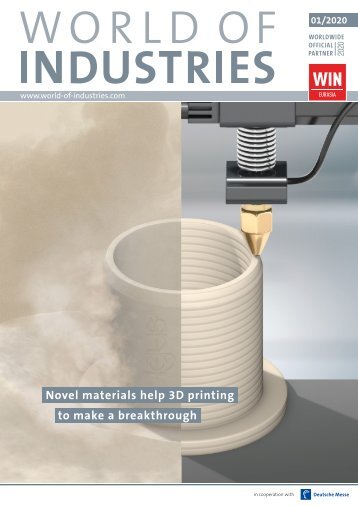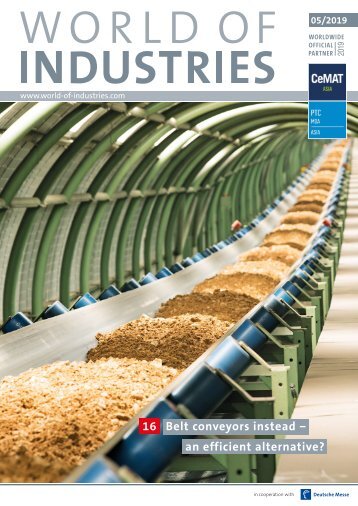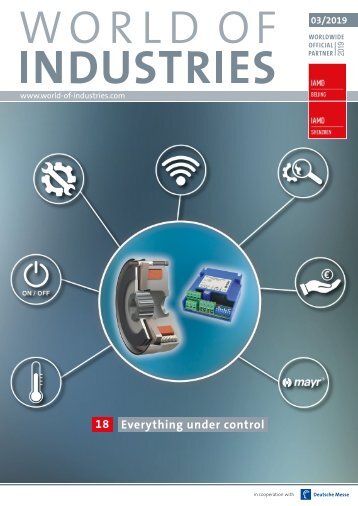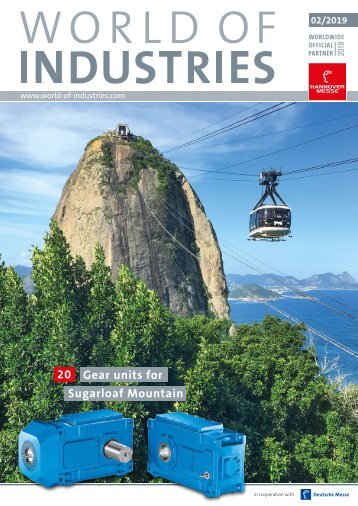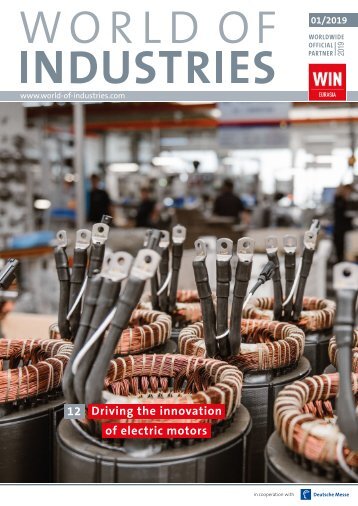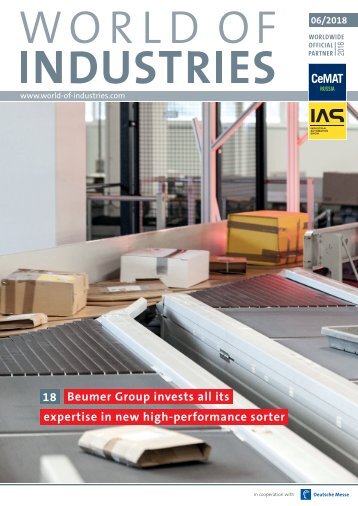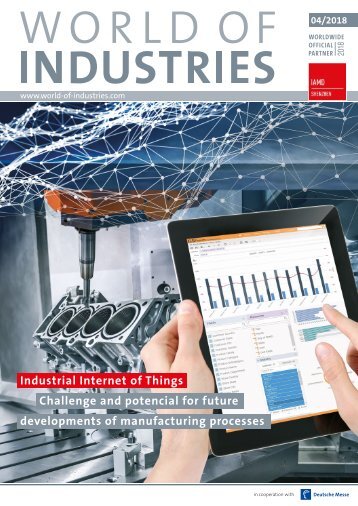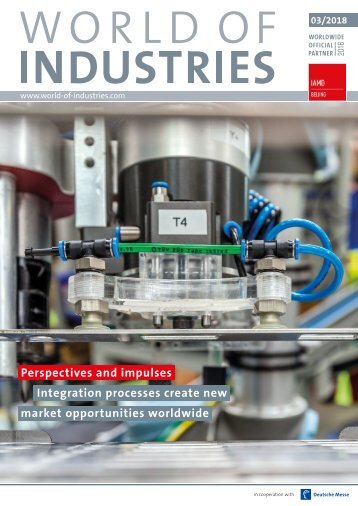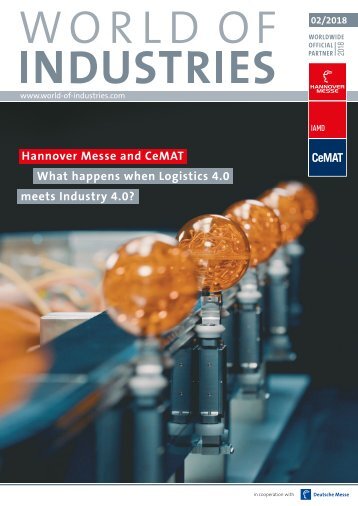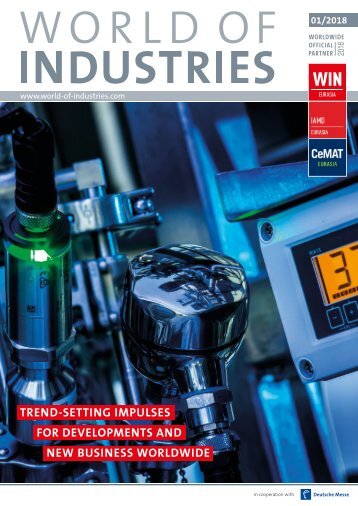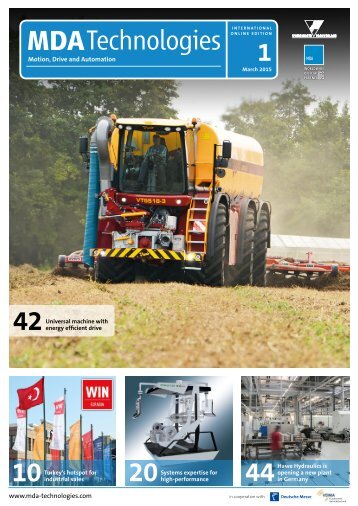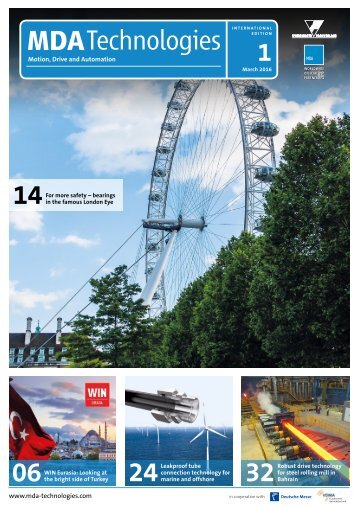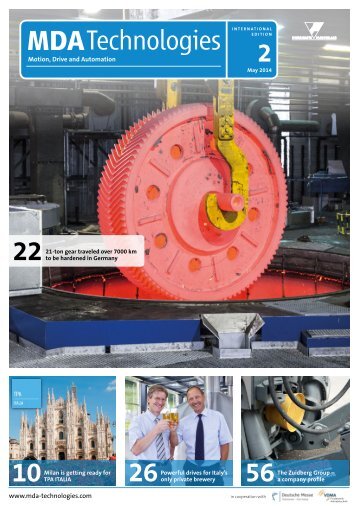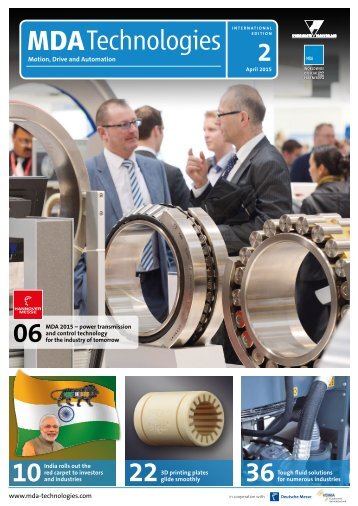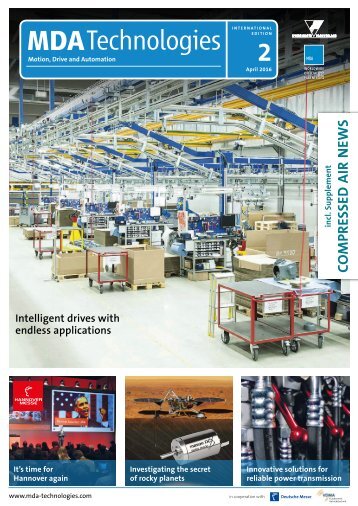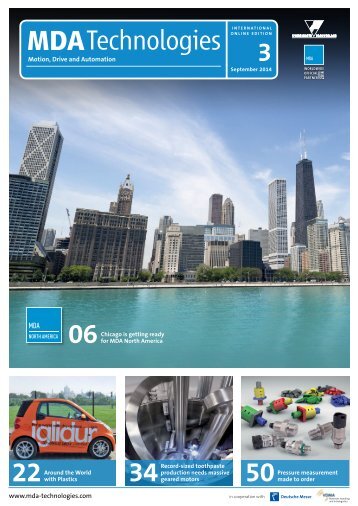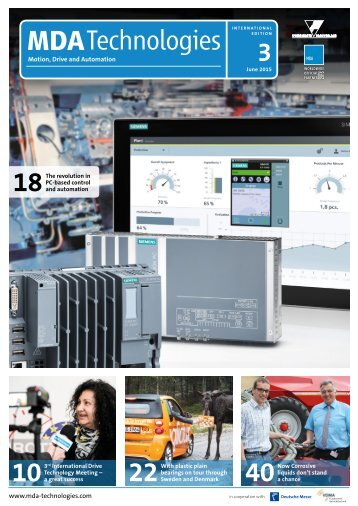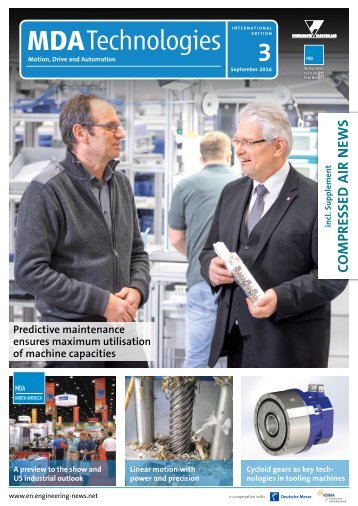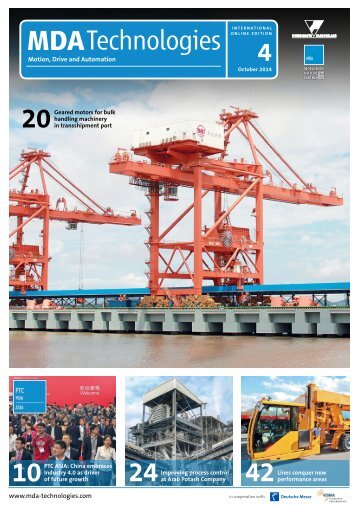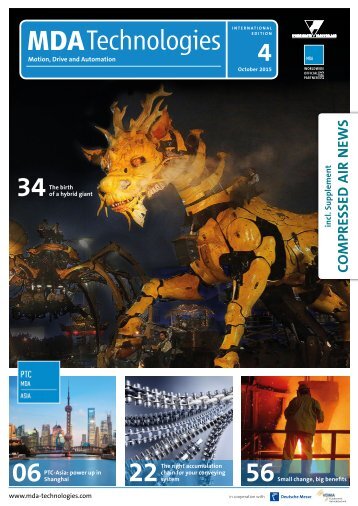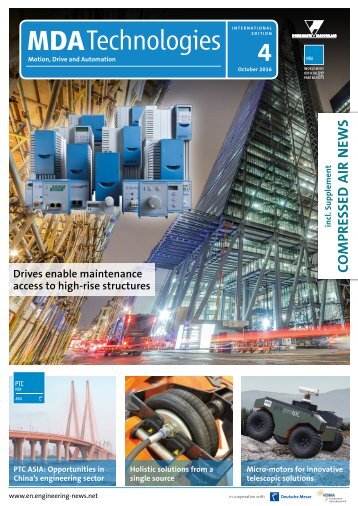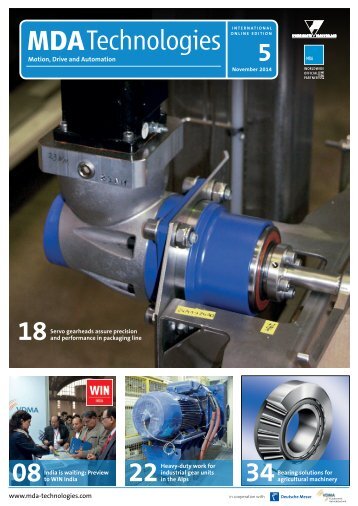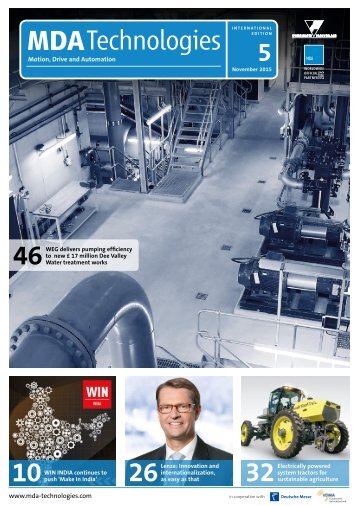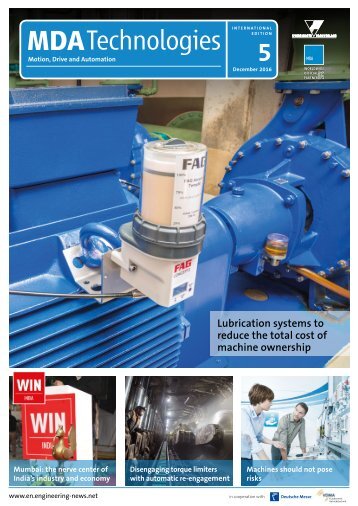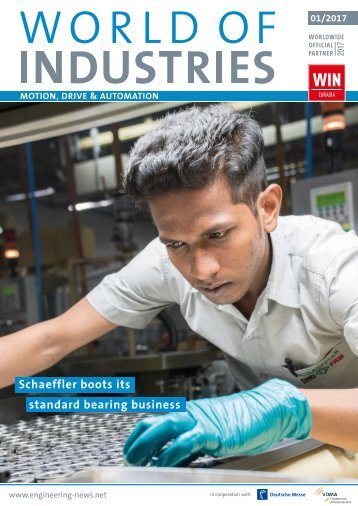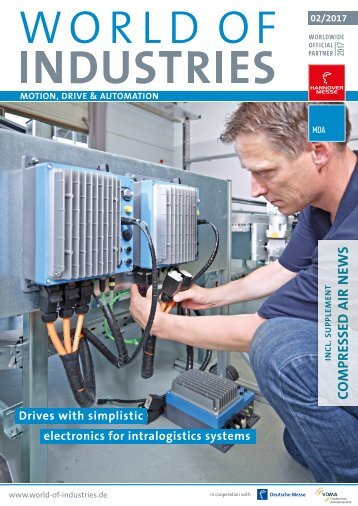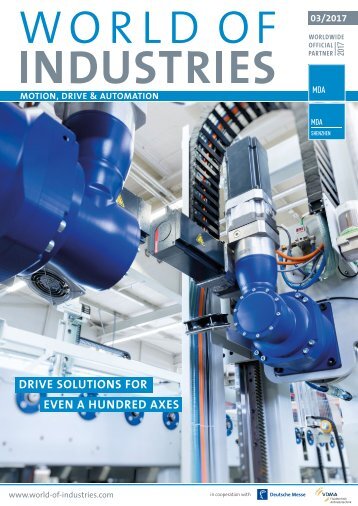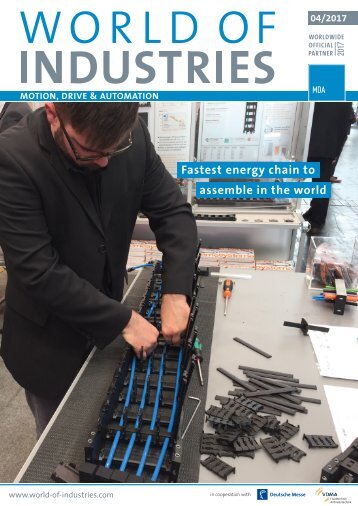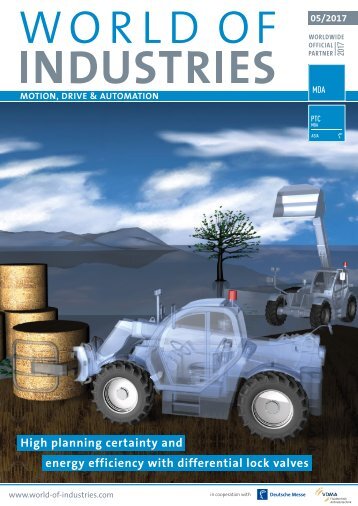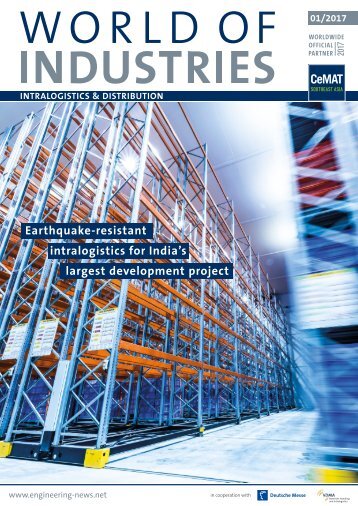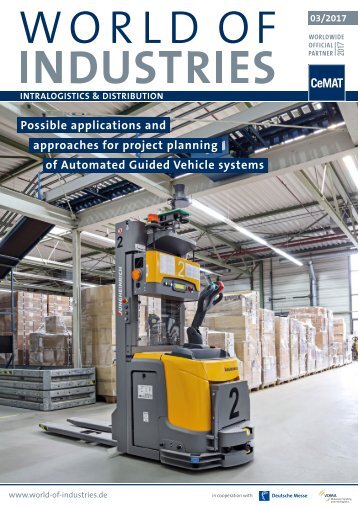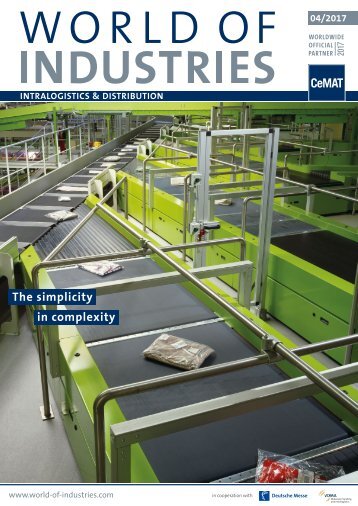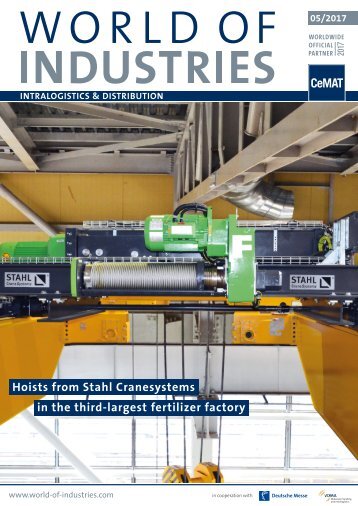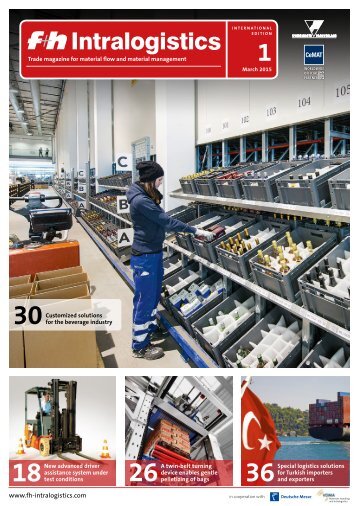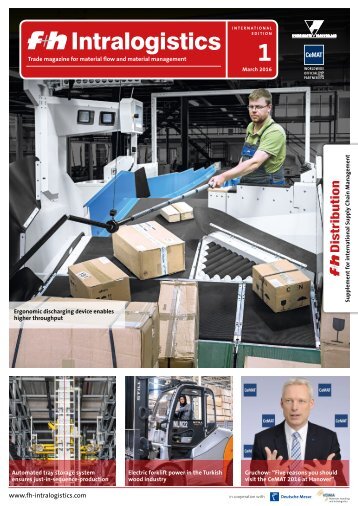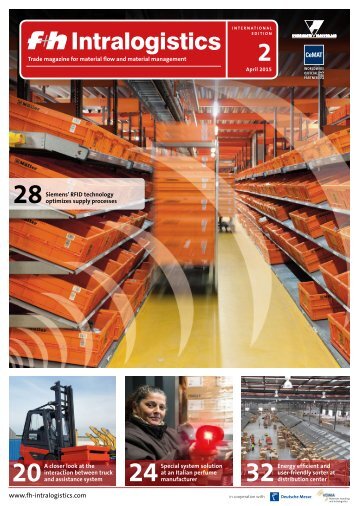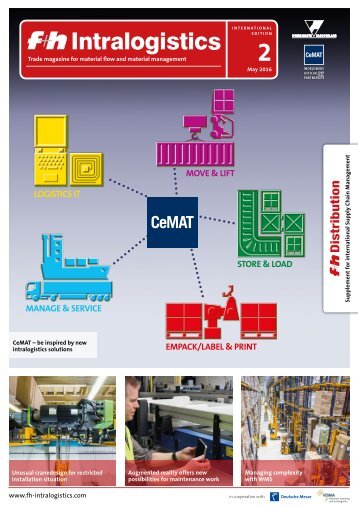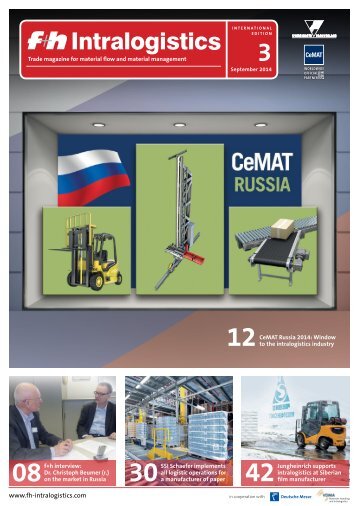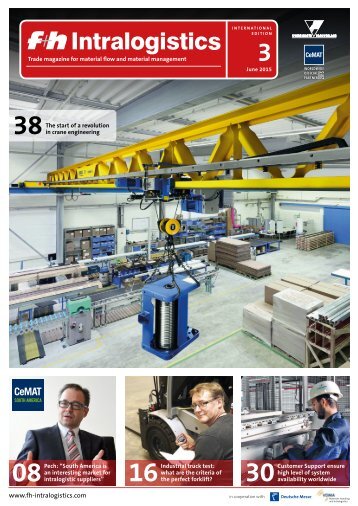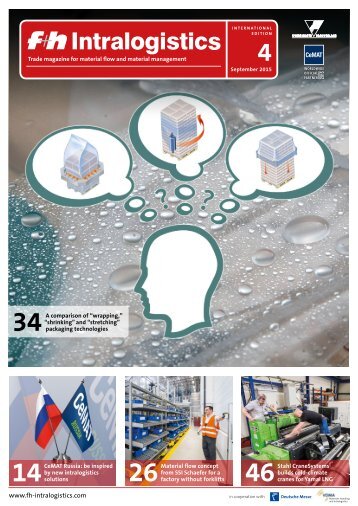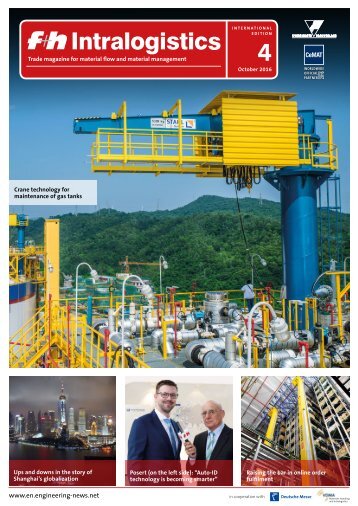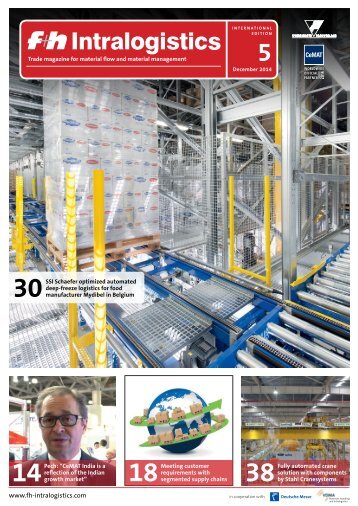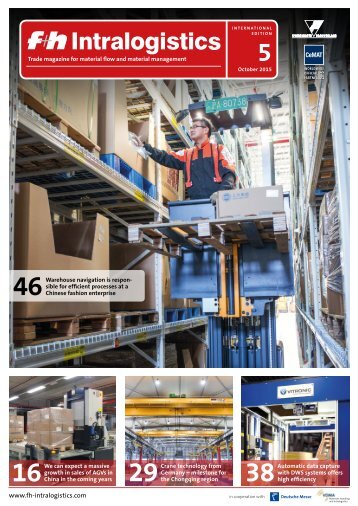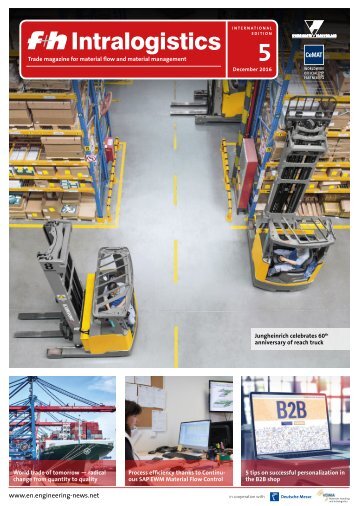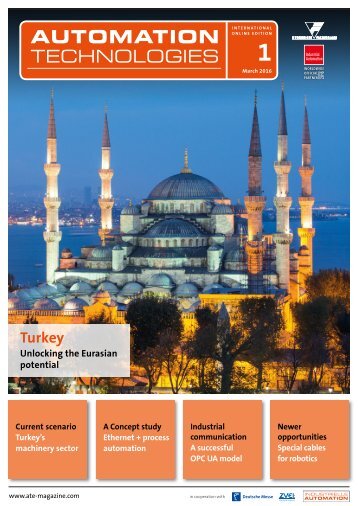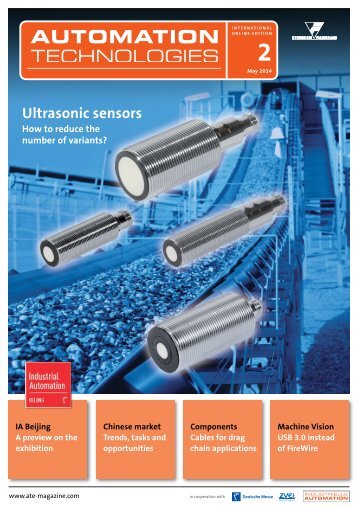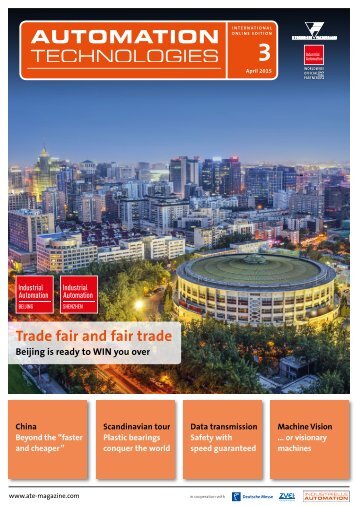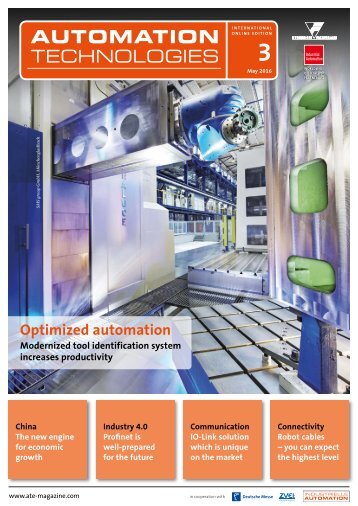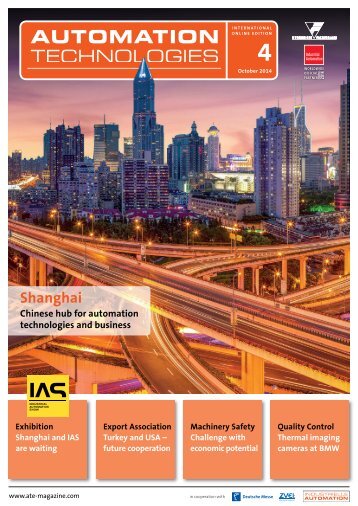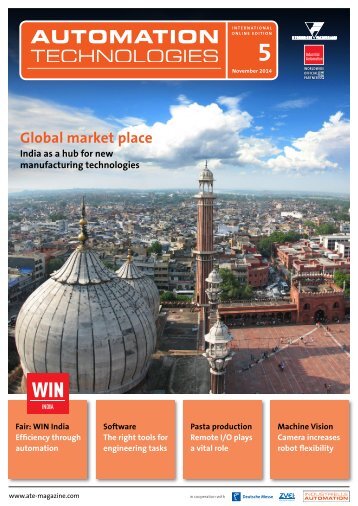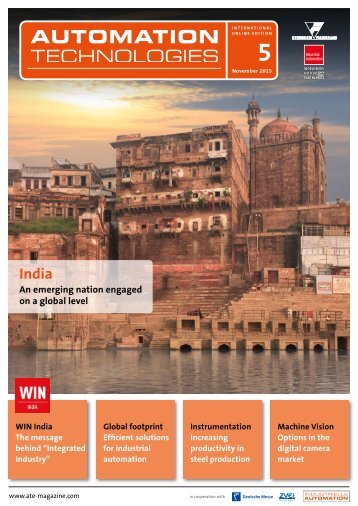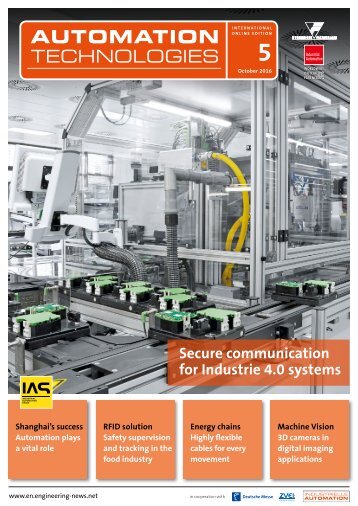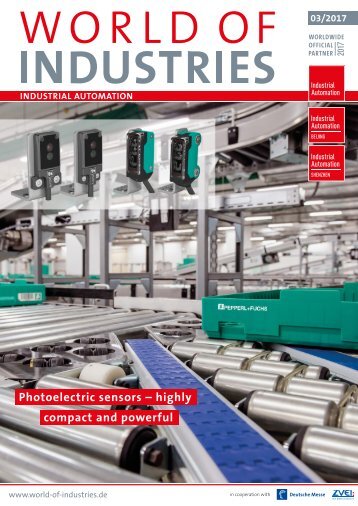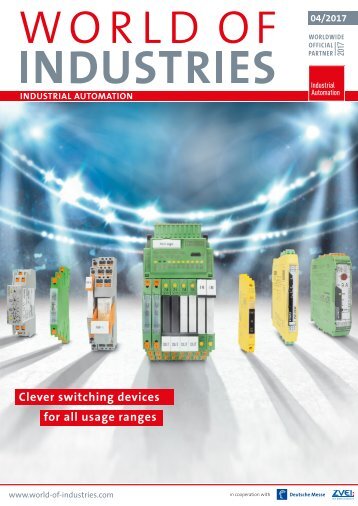Automation Technologies 4/2015
- Text
- Automation
- Technologies
One click saves 50 %
One click saves 50 % cost of sensors for Valensina About Company name: Autosen Gmbh Brands: Online sales and trading in sensor technology Headquarters: Essen, Germany Products: inductive proximity switches and photoelectric sensors on the actual needs of the industry Every day, up to 500,000 litres of high quality fruit juice can be filled on five lines in the Valensina’s Mönchengladbach plant. As a supplier to the major trade chains, the Valensina group has largely automated its production site in the headquarters, to meet the high requirements on freshness and delivery times. The required sensors are purchased via the internet which reduces costs and simplifies logistics. When one of your major sales points are the food retailers, availability and visibility of the products is extremely important for your brand and you just cannot afford a plant downtime. The logistics chain in fruit juice production, expanding from harvesting, squeezing, packaging up to the sales counter, is tightly timed. To guarantee optimal freshness and the maximum best before date, Valensina‘s juice packages usually go directly from Mönchengladbach- Giesenkirchen to the refrigerators in the stores, without any delays and within 24 hours of the order receipt. A small buffer stock in the neighbouring town Korschenbroich is used to meet peaks in production and demand. The goal is to reduce delivery times to ensure maximum freshness. Every day, up to 500,000 litres of high-quality fruit juice can be filled on five lines in the plant in Mönchengladbach. The juice, which is freshly squeezed three times a week, is mainly exported to Europe, whereas the direct fruit juice, filled daily and cooled, goes mostly to the German supermarkets. The especially careful pasteurisation and permanent cooling of the juice ensures a fresh taste experience. Hygiene is the highest priority in all production processes, also because it is important for the best before date. In addition to two conventional filling lines, they also operate three sterile ultra-clean lines. High hygienic requirements Due to the high hygienic requirements the sensors installed in the plant are put to the test. Juice production on the ultra-clean systems starts from Sunday evening to Wednesday morning without interruption. Then the installations are cleaned by means of chlorinated cleaning agents and foam nozzles, at an operating pressure of 25 bar. The conventional installations are cleaned daily. This AUTOMATION TECHNOLOGIES 4/2015
SENSORS AND MEASUREMENT means that the inductive and photoelectric sensors that are developed to detect and transmit information reliably and precisely, are exposed to chemicals and moisture unfavourable conditions for the devices. Wear and tear in sensor technology For the harsh and wet production environment, sensors with a high protection rating and special equipment for the food industry are chosen. Devices such as the AO001 diffuse reflection sensor from the supplier autosen featuring a flush front lens made of resistant and shatterproof plastic for residue-free cleaning, stainless steel housing with the protection rating IP68 / IP 69K and double seals. The robust design reduces the risk of defects, nevertheless they cannot be entirely excluded. “To reduce downtime to a minimum in production processes, sensors must be easily replaceable if need be”, says Ernst Peter Froitzheim, technical leader of the FSP Frischsaft Frische Produktions GmbH, operator of the production installations at Valensina‘s facility. The foreman is increasingly using Autosen products which he can order online 24/7 and that make a spare parts stock almost redundant. “Significantly easier and faster than via the wholesaler”, says Froitzheim who also has to keep economic efficiency in mind. He estimates the savings to about half of the usual price, thanks to switching over to Autosen who dispenses with the conventional sales tools, commissions and passes the cost advantages on to the customers. So far, Froitzheim has replaced about 15 percent of the sensors, each including connector and cable. Autosen positioned itself as a quality supplier at the interface between manufacturer and user. Under its own label the company offers a range of thoroughly selected and tested inductive as well as photoelectric sensors of established suppliers. A routine test is carried out on all sensors before being dispatched. Only those who meet the quality requirements will get the Autosen quality seal and will be distributed under the Autosen label – on notably better terms. potentials were created through automation. The manually operated butterfly valves were replaced by automatic two-way ones through which the juice and the cleaning agent run separately from each other without mixing. All plant states are permanently detected and monitored, all operations are automatically controlled and documented. For each of these processes step sensors are required. Froitzheim estimates that they use hundreds of sensors in their plants, about 70 to 80 % in standard applications such as the packaging and picking area. Here, simple devices with plastic housings are used that have the same functions like their more robust counterparts, but are economically even more efficient. Also in this area, Valensina plans to switch over to Autosen. In conclusion, the logistic and financial costs for the sensors are considerably reduced thanks to the online procurement. With significant savings of up to 50 % per sensor and several hundred devices used daily, Valensina can achieve considerable cost advantages without having to make concessions with regard to the sensors‘ lifetime. Moreover, in the medium-term the spare parts stock can be reduced so that less capital is tied up. The procurement process is simple and requires no specialist knowledge thanks to its intuitive handling. Moreover, “compatibility is fully guaranteed” says the technical leader who has now even equipped the highlight of the production – an Italian ultra-clean filling line put into operation in 2014 – with green glimmering sensors from Autosen. Photographs: Autosen GmbH, Valensina GmbH www.autosen.com Optimisation through automation In the past decades Valensina has increasingly invested in the production installations, and in 2004 the production was completely switched over to fully automated operation which led to a considerable increase in the economic efficiency. Since handling errors are virtually excluded, significant optimisation Autosen online shop for sensors AUTOMATION TECHNOLOGIES 4/2015
- Page 1 and 2:
INTERNATIONAL ONLINE EDITION 4 Octo
- Page 3 and 4:
EDITORIAL China’s progress in aut
- Page 5 and 6:
COLOMBIA SLOVAKIA TABLE OF CONTENT
- Page 7 and 8:
Endress+Hauser acquisitions in Colu
- Page 9 and 10:
How to assess image quality? Images
- Page 11 and 12:
2. RUBRIZIERUNGSEBENE I 1. RUBRIZIE
- Page 13 and 14:
AUTOMATION TECHNOLOGIES The product
- Page 15 and 16:
NEWS AND MARKETS change of China fr
- Page 17 and 18:
ead article AUTOMATION TECHNOLOGIES
- Page 19 and 20:
AUTOMATION TECHNOLOGIES video fair
- Page 21 and 22:
NEWS AND MARKETS next page China is
- Page 23 and 24:
AUTOMATION TECHNOLOGIES read articl
- Page 25 and 26:
NEWS AND MARKETS the Ruhr area with
- Page 27 and 28:
AUTOMATION TECHNOLOGIES read articl
- Page 29 and 30:
AUTOMATION TECHNOLOGIES read articl
- Page 31 and 32:
ead article AUTOMATION TECHNOLOGIES
- Page 33 and 34: ead article AUTOMATION TECHNOLOGIES
- Page 35 and 36: ead article AUTOMATION TECHNOLOGIES
- Page 37 and 38: ead article AUTOMATION TECHNOLOGIES
- Page 39 and 40: AUTOMATION TECHNOLOGIES read articl
- Page 41 and 42: ead article AUTOMATION TECHNOLOGIES
- Page 43 and 44: ead article AUTOMATION TECHNOLOGIES
- Page 45 and 46: ead article AUTOMATION TECHNOLOGIES
- Page 47 and 48: ead article AUTOMATION TECHNOLOGIES
- Page 49 and 50: ead article
- Page 51 and 52: AUTOMATION TECHNOLOGIES Products un
- Page 53 and 54: ead article
- Page 55 and 56: ead article AUTOMATION TECHNOLOGIES
- Page 57 and 58: ead article AUTOMATION TECHNOLOGIES
- Page 59 and 60: Kyland Technology’s new series of
- Page 61 and 62: China’s progress in automation ED
- Page 63 and 64: NEWS AND MARKETS dustrial transform
- Page 65 and 66: NEWS AND MARKETS Seminars, workshop
- Page 67 and 68: NEWS AND MARKETS machinery that inc
- Page 69 and 70: NEWS AND MARKETS impacts does this
- Page 71 and 72: NEWS AND MARKETS next page Why are
- Page 73 and 74: NEWS AND MARKETS features of the pr
- Page 75 and 76: Endress+Hauser training rig provide
- Page 77 and 78: SENSORS AND MEASUREMENT At the end
- Page 79 and 80: SENSORS AND MEASUREMENT characteris
- Page 81 and 82: SENSORS AND MEASUREMENT next page O
- Page 83: SENSORS AND MEASUREMENT 50 ms or mo
- Page 87 and 88: CONTROL AND DRIVE TECHNOLOGY n Adop
- Page 89 and 90: CONTROL AND DRIVE TECHNOLOGY Real t
- Page 91 and 92: CONTROL AND DRIVE TECHNOLOGY LCA Au
- Page 93 and 94: CONTROL AND DRIVE TECHNOLOGY comple
- Page 95 and 96: Harzer Antriebstechnik GmbH Harzer
- Page 97 and 98: CONTROL AND DRIVE TECHNOLOGY next p
- Page 99 and 100: CONTROL AND DRIVE TECHNOLOGY cates
- Page 101 and 102: 02 The display integrated in the co
- Page 103 and 104: INDUSTRIAL COMMUNICATION Product Ma
- Page 105 and 106: 2. RUBRIZIERUNGSEBENE I 1. RUBRIZIE
- Page 107 and 108: INDUSTRIAL COMMUNICATION next page
- Page 109 and 110: SLOVAKIA 2. RUBRIZIERUNGSEBENE I 1.
- Page 111 and 112: COMPONENTS AND SOFTWARE Simulating
- Page 113 and 114: COMPONENTS AND SOFTWARE plug-in uni
- Page 115 and 116: MACHINE VISION needs to be replaced
- Page 117 and 118: MACHINE VISION 01 Combining thermal
- Page 119: MACHINE VISION TG165 thermal imagin
Inappropriate
Loading...
Mail this publication
Loading...
Embed
Loading...

